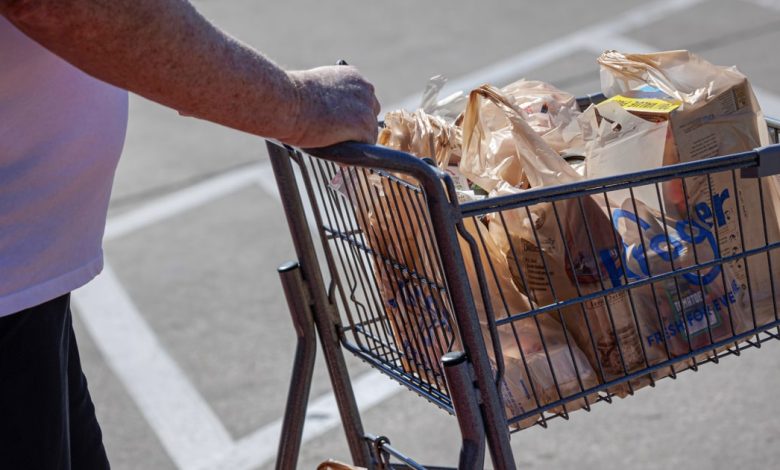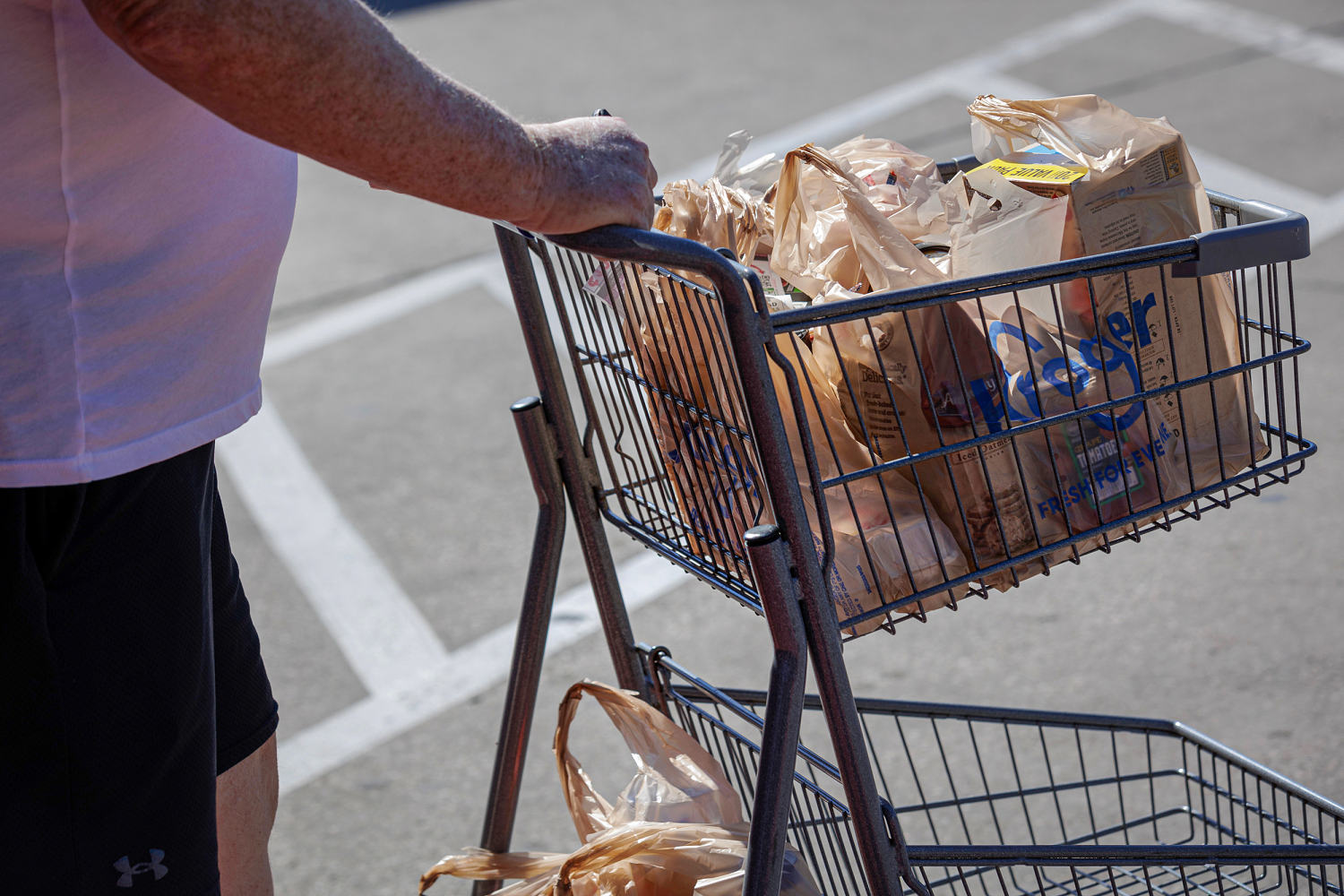Trump’s new tariffs will hit lower-income households the hardest


The ripple effects of President Donald Trump’s new wave of sweeping tariffs announced this week will be felt the most by lower-income Americans, who are heavily reliant on products from countries hit the hardest by Trump’s tariffs and have less disposable income to absorb higher prices.
Trump is placing some of his highest tariffs on goods coming from countries making the low-cost products that line the shelves of discount retailers. Products from Vietnam, Sri Lanka and Cambodia, for instance, will have a more than 40% tariff — that is, now importers will need to pay 40% of the value of those goods to Customs and Border Protection at ports of entry to get them into the country. Goods from China will have a total of more than 70% worth of additional tariffs.
While Trump campaigned on a pledge to lower prices for struggling Americans, his tariffs are expected to increase the cost of everything from kids’ shoes to fresh produce, according to economists and business executives. The total impact from tariffs announced since Trump took office could cost the average household $3,800 per year, according to analysis by the Budget Lab at Yale University.
For the lowest-income households, they could see a 4% reduction in their after-tax income from the tariffs, the report estimated — three times greater than the impact on higher-income households. That’s because those consumers spend more of their income on necessities like food, clothing and transportation and are more likely to buy products imported from countries hit hardest by the tariffs.
“Tariffs are a regressive tax, they hurt lower-income families more than they do upper-income families,” said Ernie Tedeschi, director of economics at the Budget Lab, who served as the chief economist at the White House Council of Economic Advisors during the Biden administration. “Tariffs are essentially a consumption tax, they’re a tax on spending, and lower-income families spend a greater share of their income than higher-income families do, so they’re just more exposed to tariffs.”
Trump’s tariffs put in place since he took office could increase prices overall by 2.3%, which would be on top of the roughly 3% inflation the U.S. is already experiencing, according to the Budget Lab analysis. Among the areas that will be hit the hardest, according to the estimate: leather goods, including shoes, will increase in price by 18%, apparel (17%) and electrical equipment (10%). Consumers could also see higher grocery bills, with the price of rice expected to increase 10% and prices of fish, nuts and fresh produce set to rise 4%.
Trump and White House officials have downplayed the impact those price increases will have, arguing they are necessary in order to realign global trade to bring back manufacturing jobs to the U.S. Treasury Secretary Scott Bessent, who made millions working on Wall Street, said he believes Americans want more than low-cost goods.
“The American dream is not, ‘Let them eat flat screens,’” Bessent said last month on NBC News’ “Meet the Press.”
“The American dream is not contingent on cheap baubles they get from China,” he said. “It is more than that, and we are focused on affordability, but it’s mortgages, it’s cars, it’s real wage gains.”
Americans, though, have proven to be sensitive to rising prices in recent years, after a spike in inflation drew backlash from voters in the 2024 elections. According to exit polling, 4 in 10 voters said the economy was their top issue, more than any other topic surveyed.
“I gotta tell you, as a former Biden administration official, never underestimate how grocery inflation will piss people off,” said Tedeschi.
Similar to inflation, the impact will be felt most acutely by households with the lowest income. Not only do those households rely more on lower-cost items imported from countries like Vietnam or China, but they also have less breathing room in their budgets to absorb higher costs.
“At the lower end, they need every dollar for the things that they’re doing, like food and bus rides and shelter,” said Kimberly Clausing, a nonresident senior fellow at the Peterson Institute for International Economics. “If you have a household income of $100,000 and the tariffs cost you $2,000, you’re going to feel bad about that, it’s 2% of your income. But imagine you have an income of $20,000 and the tariffs cost you $800 — that’s 4% of your income and that is going to feel much more harmful.”
Those lower-income households could also be in a weaker position to withstand an economic downturn, which Wall Street banks and corporate executives say has become more likely as a result of the tariffs. They warn that higher costs for businesses could cause them to pause or pull back on investments, like a new location or factory, and less consumer spending could result in job cuts.
“People higher in the income distribution can weather these storms without going hungry or being evicted, but many Americans live much more economically precarious lives,” said Clausing. “So one of the big ironies of this policy is that Trump’s populism was really meant to speak to those left behind, and it’s going to fundamentally make their lives much, much worse.”
Retailers on the front lines of the tariffs say they are preparing to have to raise prices while anticipating falling demand from shoppers. On Thursday, following Trump’s announcement, shares of retailers tumbled with the stock price for discount retailer Five Below and Wayfair, which sells lower-cost furniture, down more than 20%, while Target and Dollar Tree fell more than 10%.
“The early indications are these tariffs are going to be very serious for retail,” said Blake Harden, vice president for international trade with the Retail Industry Leaders Association.
For example, the tariff rate on a baby shirt made in Vietnam will now more than double, to 78%, according to RILA. Retailers are also anticipating consumers could be spending less overall, said Harden.
“The margins are not large in retail. They’re pretty thin to begin with,” said Harden.
For footwear made in China, where the vast majority of lower-cost shoes are produced, the tariff rate has gone from around 10% to more than 70%. When all the various tariffs and markups are factored in, a shoe that would have retailed for $33 a year ago would now sell for $51, said Matt Priest, president of the Footwear Distributors and Retailers of America.
“These are just astronomical numbers that our members have never had to deal with and are far worse than we are anticipating,” said Priest. “The industry is kind of in shock. I’ve been on the phone pretty much all night long because of the repercussions about how this will impact American jobs, American consumers.”
Ultimately, the higher costs will cause some retailers to stop selling certain low-cost shoes because they aren’t able to make a profit on them, he said.
“I think there are going to be a number of products that just aren’t worth making anymore, because it’s not profitable,” said Priest. “It’s going to be very limiting to what’s available to American consumers in the footwear space.”




